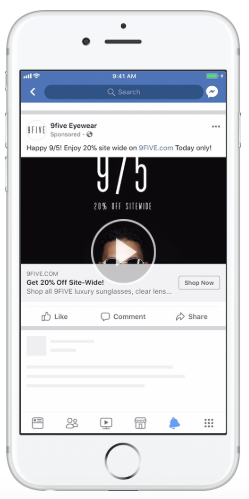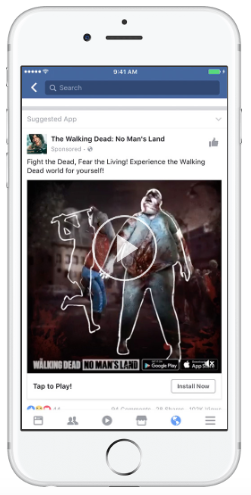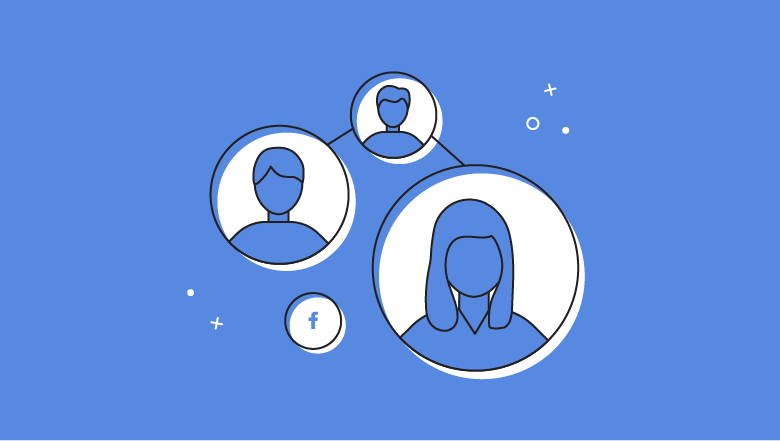Facebook Lookalike Audiences can help you find your new best customers. It’s a powerful tool for better Facebook ad targeting—drawing learnings about your most successful customers to find new people who are likely to be good customers, too.
Think of it as a sophisticated audience matchmaker for marketers. You tell Facebook what you like in a customer, and Facebook delivers a new audience segment filled with prospects that meet your criteria.
Ready to find the audience of your dreams? Read on to learn how to create a Lookalike Audience for your Facebook ads, plus tips that will help you find the best match.
What are Facebook Lookalike Audiences?
Facebook Lookalike Audiences can be used to reach people who are similar to your current customers. They increase the probability of generating high-quality leads and offer more value on ad spend.
Lookalike Audiences are formed based on source audiences. You can create a source audience (also known as a seed audience) using data from:
- Customer Information. A newsletter subscription list or a customer file list. You can either upload a .txt or .csv file or copy and paste your information.
- Website Visitors. To create a custom audience based on website visitors, you need to have Facebook pixel installed. With pixel, you create an audience of people who have visited your website, looked at a product page, completed a purchase, etc.
- App activity. With active Facebook SDK event tracking, app administrators can collect data on the people who have installed your app. There are 14 pre-defined events that can be tracked such as, “added to the basket” for retails apps, or “level achieved” for game apps.
- Engagement. An engagement audience is comprised of people who engaged with your content on Facebook or Instagram. Engagement events include: video, lead form, canvas and collection, Facebook page, Instagram business profile, and event.
- Offline activity. You can create a list of people who interacted with your business in person, by phone, or another offline channel.
Multiple Lookalike Audiences can be used at the same time for the same ad campaign. You can also pair Lookalike Audiences with other ad targeting parameters, such as age and gender or interests and behaviors.
How to use Facebook Lookalike Audiences
Step 1: From the Facebook Ads Manager, go to Audiences.
Step 2: Click Create audience and choose Lookalike Audience.
Step 3: Choose your source audience. Remember, this will be a custom audience you’ve created from customer information, Pixel or app data, or fans of your page.
Note: Your source audiences needs to contain at least 100 people from the same country.
Step 4: Select the countries or regions you would like to target. The countries you choose will determine where people in your Lookalike Audience are based, adding a geo-filter onto your Lookalike Audience.
Note: You don’t have to have anyone from the country you want to target in your source.
Step 5: Choose your desired audience size. Size is expressed on a scale of 1-10. Smaller numbers have high similarity and larger numbers have high reach. Facebook will provide you with an estimated reach for the size you choose.
Note: It can take between six and 24 hours for your Lookalike Audience to be finished, but you can still proceed to ad creation.
Step 6: Create your ad. Go to the Adverts Manager and click Tools, then Audiences, to see if your Lookalike Audience is ready. If it is, select it and click Create Advert.
9 tips for using Facebook Lookalike Audiences
Find the right source audience and use these tips to reach new people on Facebook.
1. Use the right source audience for your goals
Different custom audiences match different goals.
For example, if your goal is to drive awareness of your business, a Lookalike Audience based on your Page Fans may be a good idea.
If your goal is to increase online sales, then a Lookalike Audience based on website visitors will be a better choice.
2. Get creative with Custom Audiences
You can create custom audiences around a variety of parameters. Drill down on the options that best align with your campaign goals.
Ideas for Custom Audiences include:
- Video audience. If you’re launching a video-based campaign, create an audience based on people who have engaged with your videos in the past.
- Recent website visitors. All website visitors may be too broad of a list, especially if conversions are your objective. Target people who have visited your website in the past 30 days, or visitors who have put something in their cart.
- Email audience. Newsletter subscribers are interested in receiving news and deals about your business. Use this audience to get more subscribers, or if you’re planning a campaign with similar content.
3. Test your Lookalike Audience size
Consider different audience sizes for different campaign goals.
Smaller audiences (1-5 on the scale) will most closely match your custom audience, whereas large audiences (6-10 on the scale) will increase your potential reach, but decrease the level of similarity with your custom audience. If you’re optimizing for similarity, aim for a smaller audience. For reach, go large.
4. Choose high-quality data
The better the data you provide, the better the results.
Facebook recommends between 1,000 and 50,000 people. But an audience of 500 loyal customers with always perform better than an audience of 50,000 good, bad, and average customers.
Avoid broad audiences like “all website visitors” or “all app installers.” These large audiences will include great customers along with those who bounce after a short time.
Hone in on the metrics that determine your best customers. Often these are further down the conversion or engagement funnel.
5. Keep your audience list up-to-date
If you’re providing your own customer information, make sure it’s as current as possible. If you’re creating a custom audience with Facebook data, add date range parameters.
For example, if you’re adding a custom audience based on website visitors, you may only want to target those who have visited your website in the last 30 to 90 days.
Lookalike audiences update dynamically every three to seven days, so anyone new who visits will be added to your Lookalike Audience.
6. Use Lookalike Audiences in combination with other features
Enhance your lookalike audience targeting by adding more targeting parameters such as age, gender, or interests.
To launch its home theatre speaker, PLAYBASE, Sonos developed a multi-tier campaign that used Lookalike Audiences in combination with video ads, link ads, and Facebook dynamic ads. Phase one of the campaign targeted existing customers and new ones based on their interests, and phase two retargeted video viewers and Lookalike Audiences based on phase one engagements.
The one-two punch campaign delivered 19 times the return on ad spend.
7. Optimize bids with a set of Lookalike Audiences
Use your most effective audience to segment Lookalike Audiences into non-overlapping tiers.
To do this, click Advanced Options when selecting your audience size. You can create up to 500Lookalike Audiences from just one source audience.
For example, you could segment an audience based on the most similar, second most similar, and least similar lookalikes, and bid accordingly on each.

8. Pinpoint the right locations
Lookalike Audiences are a great way to target expansion in new global markets.
Most often marketers know where they’re looking for new acquisitions. If global domination is your aim (or you’re not sure where to focus), consider creating a Lookalike Audience in app store countries or emerging markets.

Facebook will always prioritize similarity over the location. That means your Lookalike Audience may not be evenly distributed between your locations.
Sunglasses retailer 9FIVE wanted to extend their US campaign to Canada and Australia, so it created an international Lookalike Audiences based on current customers in both countries. Ads were also segmented per region and targeted with unique dynamic ads. They lowered cost per acquisition by 40 percent and achieved 3.8 times the return on ad spend.

9. Try the Customer Lifetime Value Option
If your business involves customer transactions and engagements that take place over a longer period of time, consider creating a customer lifetime value (LTV) custom audience. But even if not, Value-based Lookalike Audiences can help separate your big spenders from the not-so-big spenders since they factor in consumer CRM data.
To optimize for its The Walking Dead: No Man’s Land release, Next Games created a standard Lookalike Audience of paying app users and a value-based Lookalike Audience. By comparison, the value-based audience delivered a 30 percent higher return on ad spend.

“We saw a measured uplift in performance when comparing value-based Lookalike Audiences with standard Lookalike Audiences built using identical seed audiences and would recommend testing value-based Lookalike Audiences,” said Next Games CMO, Saara Bergström.

